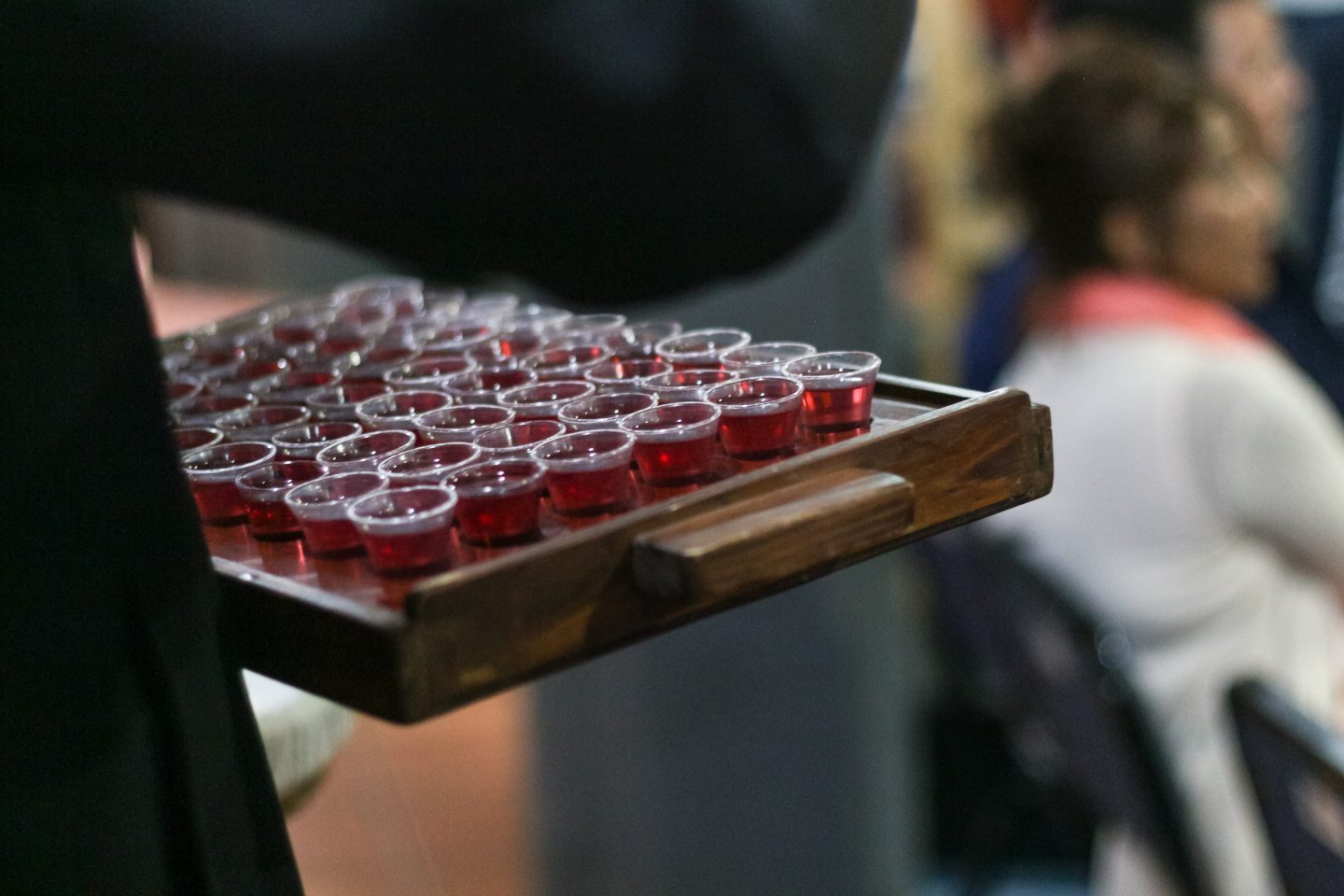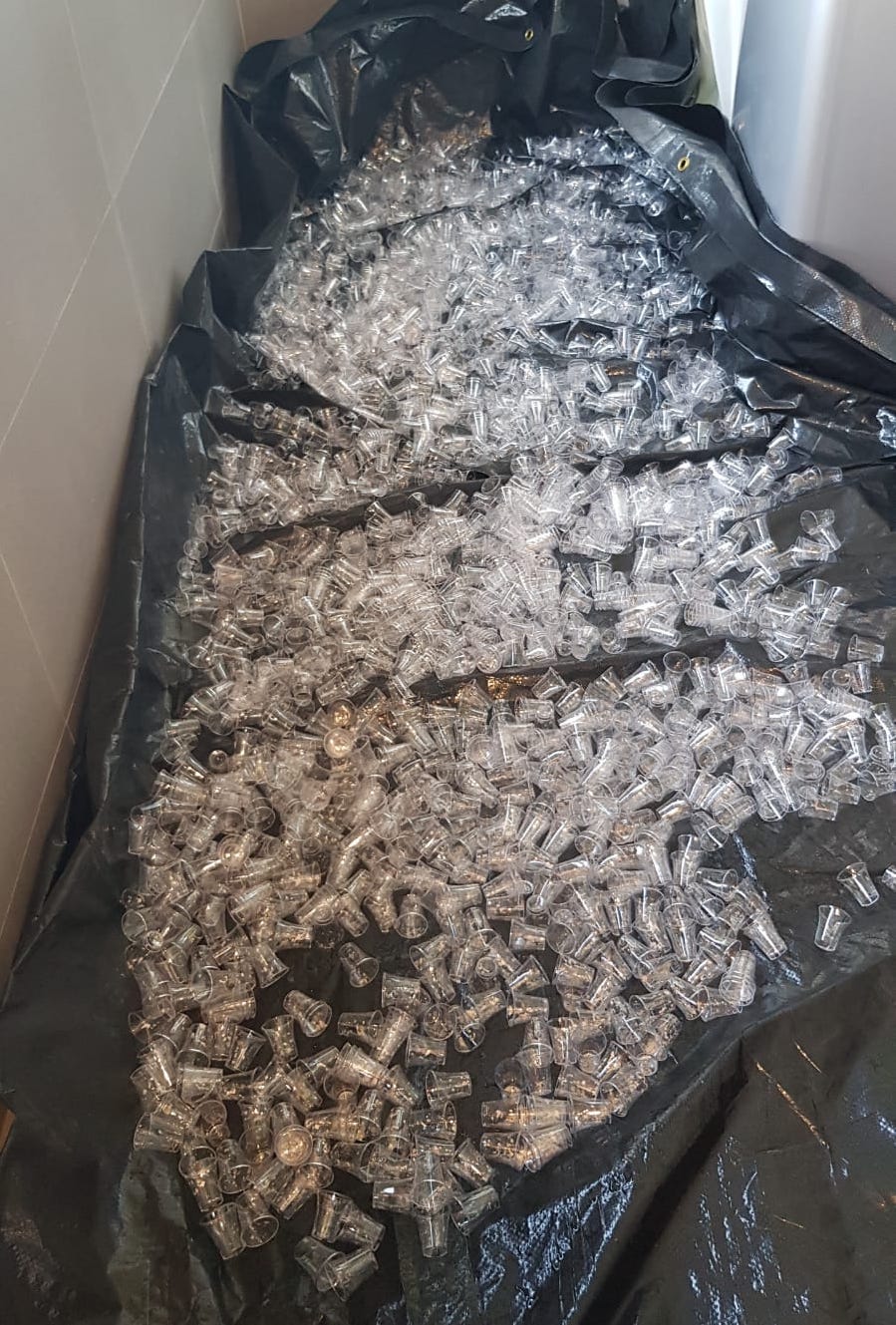
The individual communion cup is a relatively modern development, first appearing in the US in the 1890s. Photo by Nicole Honeywill / Sincerely Media on Unsplash.
“This cup is the new covenant in My blood. Do this, as often as you drink it, in remembrance of Me.” (1 Corinthians 11:25) I sometimes wonder (in my more frivolous moments) whether Jesus, when He first instituted Holy Communion, had a fleeting glimpse of how we’d celebrate it today.
Some of us drink from the chalice, others dip the wafer in the wine. Some churches use individual plastic or glass communion cups while others rely on pre-filled “fellowship cups”.
A bit of history trivia: The individual communion cups made their first appearances in the US in the 1890s due to health concerns, after almost 2,000 years of “sharing in one cup”.
About 40% of what is thrown into the recycling bins is contaminated.
Having been an Anglican for most of my life, I was accustomed to a common chalice though I’d always dipped and never sipped – can’t get over the idea of sharing saliva. When I lived in Bangkok, the Baptist church I attended used individual glass cups that they washed and reused.
Now that I’m back in Singapore, the question on my mind every first Sunday of the month is: Where do our plastic communion cups go?
To the bin, some say. In the recycling, others add. But do you rinse the cups to get rid of the sticky grape juice before putting it in for recycling, I ask.
Currently, about 40% of what is thrown into the blue recycling bins is contaminated, including plastic containers that still contain remnants of food or liquid.
No more space for waste
The government recently launched the Zero Waste Masterplan, which aims to reduce the waste sent to the landfill each day by 30% because we’re running out of space to keep our incinerated ash.
In the bigger scheme of things, how much weight does a tiny communion cup carry, you may ask.
Not much but it adds up. It takes 8,000 plastic cups to fill up a bathtub – how many tubs are we filling each time we have communion?
Whenever I ask churches about this, there seems to be little impetus to change the status quo. At 2.5 cents a plastic cup, it’s easy to see why it’s the go-to solution.
Jesus’ crucifixion on the cross was probably the most inconvenient and costliest action ever.
These plastic cups are convenient to use and throw – with “fellowship cups” you don’t even have to worry about filling them. They are also cheaper than glass cups – and you don’t have to waste water washing them.
But the Gospel was never about convenience or easy fixes. Jesus’ crucifixion on the cross was probably the most inconvenient and costliest action ever, yet are we perhaps commemorating this act of sacrificial love with the most convenient and cost-effective way possible – a disposable communion cup. (Please imagine this being said gently.)
I’m not writing this out of criticism, nor am I railing against churches that use plastic cups. And I certainly understand the need/desire for convenience and ease of use, especially in big churches with multiple back-to-back services – I attend one.
However, this is a plea to consider how we can together be a better steward of God’s creation and resources. The Church here has always been a good corporate citizen (Titus 3:1) with our social services and outreach. Can we go a step further and get behind the zero waste initiatives, especially when they’re aligned with our mandate to care for the Earth?
It’s encouraging to see a small but increasing number of churches in Singapore stepping up to reduce, reuse and recycle. Quite a few have phased out single-use plastic entirely while others put a dish-washing system in place (mainly human-powered!) when they have communal meals.
Would you consider
Instead of writing on styrofoam cups or disposable cutlery, I’ve focused on the communion cup because it’s what we use as we reverently remember what Jesus did for us. And fellow Christians have also said that it feels rather incongruous to say “No” to straws outside, only to be throwing away plastic communion cups in church.
So to the churches that are using “fellowship cups”, would you prayerfully consider getting the ones that are recyclable, even though they may cost more?
It’s more expensive and takes more commitment but reusing trumps recycling – every time.
To the churches that are binning the plastic cups, would you prayerfully consider rinsing them and putting them into the recycling bin? It is more effort but perhaps church members can take turns to wash them – many hands make light work. You can even use grey water (water that you’ve used to wash your clothes or vegetables) to rinse them since it’s for recycling. For big churches, what about getting everyone to take their cup home to rinse and recycle? I’m sure with the Singaporean penchant for systems and efficiency, we can find something that works.
To the churches that are recycling the plastic cups, would you prayerfully consider moving to glass cups? It’s more expensive and it takes commitment (a dishwasher would help) but reusing trumps recycling – every time.
For now, getting churches to use glass cups might remain a pipe dream and I know I can’t just be preaching from my soap box – I need to have “skin in the game”. So like a good fool rushing in to where angels fear to tread, I’ve volunteered to rinse my church’s communion cups for recycling – all 2,500 of them.
I’m probably going to regret it tomorrow afternoon as I struggle to wash grape juice – and saliva – off those fiddly plastic communion cups. But if Jesus can wash the possibly smelly feet of His disciples, I think I can wash a few cups. I do this in remembrance of You.
Update: If you’re interested to start washing the communion cups in your church, or if you’re already doing so, I’d love to hear from you.
Here are the plastic communion cups after just one Sunday, all washed and getting dry.
We are an independent, non-profit organisation that relies on the generosity of our readers, such as yourself, to continue serving the kingdom. Every dollar donated goes directly back into our editorial coverage.
Would you consider partnering with us in our kingdom work by supporting us financially, either as a one-off donation, or a recurring pledge?
Support Salt&Light



